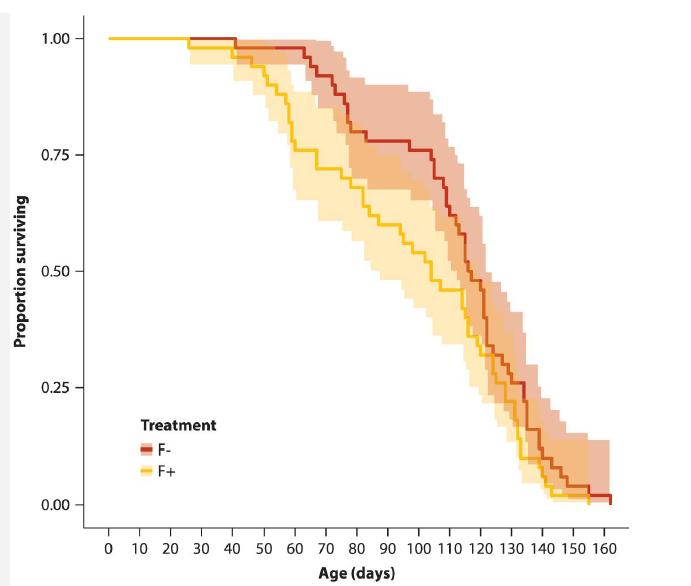Females of the bumblebee species Bombus terrestris can change from a non-reproductive worker to a reproductively mature
Question:
Females of the bumblebee species Bombus terrestris can change from a non-reproductive worker to a reproductively mature individual under certain social conditions. Blacher et al. (2017) carried out an experiment to test whether such a switch affects bee longevity. One hundred focal 3- day-old worker bees were randomly assigned one of two social treatments. In one treatment (F+), 50 bees were placed singly with 2 younger (1-day-old) sister workers. In the second treatment (F−), 50 focal bees were placed with two older (7-day-old) worker sisters. Being placed with younger sisters (the F + treatment) increased ovarian activity in focal bees, allowing the researchers to measure effects of this reproductive activity on survival. Results are shown in the survival plot below. Assume that bees are randomly sampled (in fact, they were sampled from a small number of colonies).
a. Bees of which treatment have generally higher survival over time?
b. How do the median times to death differ between treatments? Estimate by eye.
c. Using the observed and expected number of deaths over the experiment, estimate the hazard ratio of F+ to F- bees. Provide a 95% confidence interval for your estimate.


Step by Step Answer:

The Analysis Of Biological Data
ISBN: 9781319226237
3rd Edition
Authors: Michael C. Whitlock, Dolph Schluter





